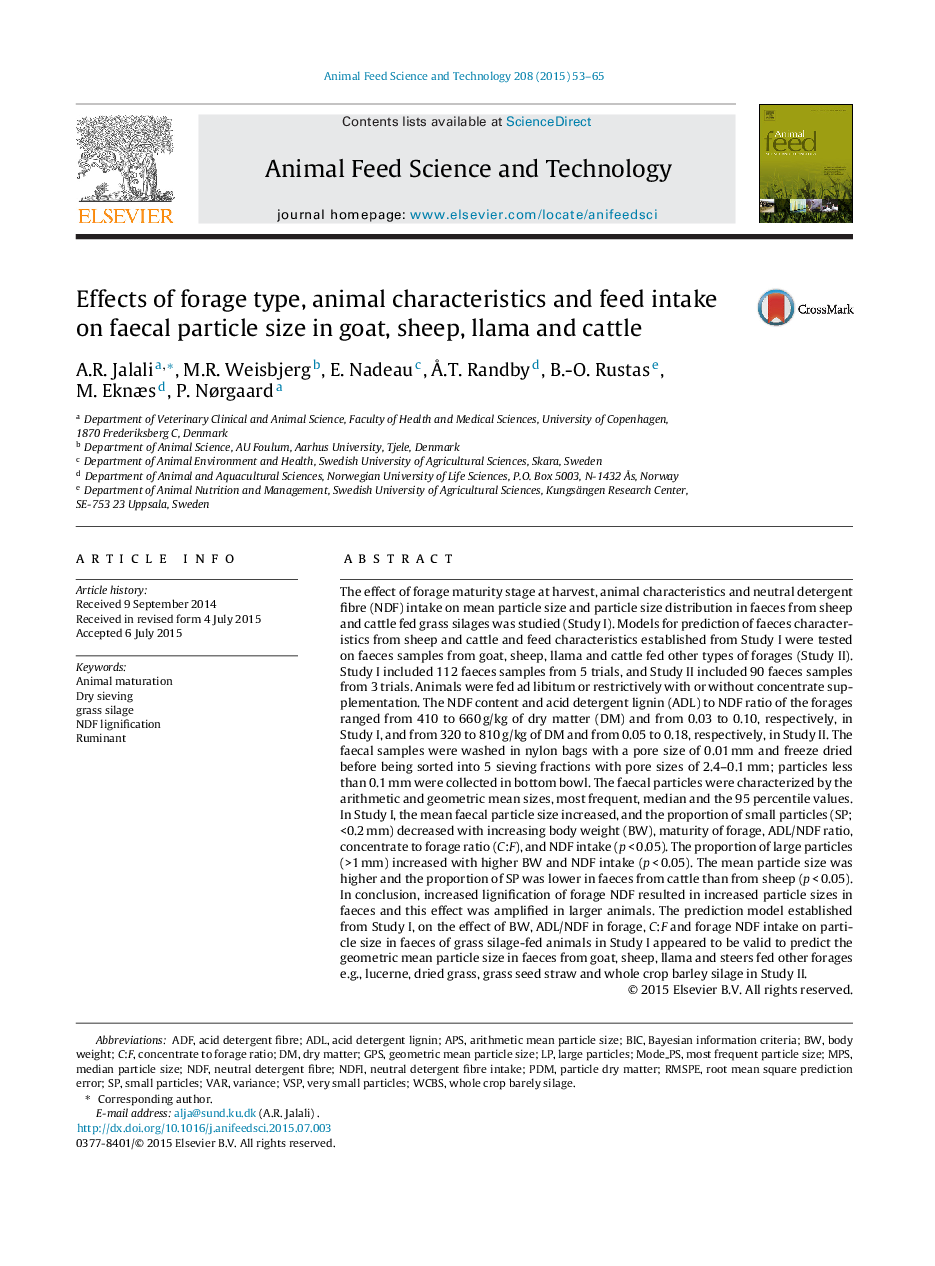| کد مقاله | کد نشریه | سال انتشار | مقاله انگلیسی | نسخه تمام متن |
|---|---|---|---|---|
| 2419486 | 1552377 | 2015 | 13 صفحه PDF | دانلود رایگان |
• Higher body weight (BW), forage ADL/NDF and NDF intake lead to larger faeces particles.
• Increased proportion of concentrate in the diet increases geometric mean particle size in faeces.
• Models for prediction of faeces characteristics from diet and animal characteristics were developed.
• Particle size in faeces from ruminant species depends on body size and dietary characteristics.
The effect of forage maturity stage at harvest, animal characteristics and neutral detergent fibre (NDF) intake on mean particle size and particle size distribution in faeces from sheep and cattle fed grass silages was studied (Study I). Models for prediction of faeces characteristics from sheep and cattle and feed characteristics established from Study I were tested on faeces samples from goat, sheep, llama and cattle fed other types of forages (Study II). Study I included 112 faeces samples from 5 trials, and Study II included 90 faeces samples from 3 trials. Animals were fed ad libitum or restrictively with or without concentrate supplementation. The NDF content and acid detergent lignin (ADL) to NDF ratio of the forages ranged from 410 to 660 g/kg of dry matter (DM) and from 0.03 to 0.10, respectively, in Study I, and from 320 to 810 g/kg of DM and from 0.05 to 0.18, respectively, in Study II. The faecal samples were washed in nylon bags with a pore size of 0.01 mm and freeze dried before being sorted into 5 sieving fractions with pore sizes of 2.4–0.1 mm; particles less than 0.1 mm were collected in bottom bowl. The faecal particles were characterized by the arithmetic and geometric mean sizes, most frequent, median and the 95 percentile values. In Study I, the mean faecal particle size increased, and the proportion of small particles (SP; <0.2 mm) decreased with increasing body weight (BW), maturity of forage, ADL/NDF ratio, concentrate to forage ratio (C:F), and NDF intake (p < 0.05). The proportion of large particles (>1 mm) increased with higher BW and NDF intake (p < 0.05). The mean particle size was higher and the proportion of SP was lower in faeces from cattle than from sheep (p < 0.05). In conclusion, increased lignification of forage NDF resulted in increased particle sizes in faeces and this effect was amplified in larger animals. The prediction model established from Study I, on the effect of BW, ADL/NDF in forage, C:F and forage NDF intake on particle size in faeces of grass silage-fed animals in Study I appeared to be valid to predict the geometric mean particle size in faeces from goat, sheep, llama and steers fed other forages e.g., lucerne, dried grass, grass seed straw and whole crop barley silage in Study II.
Journal: Animal Feed Science and Technology - Volume 208, October 2015, Pages 53–65
